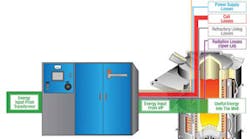Fig. 1. A diagram of useful energy into an induction melting furnace.
Heat recovery is a subject that over the years has not received the attention it deserves from metalcasters. After all, energy had for a long time been relatively cheap and saving a few dollars on heating the foundry was hardly a high priority to management. However, heat recovery can provide significant energy and cost savings as well as environmental benefits. Today, as energy costs escalate, heat recovery efforts may lead to an attractive payback and help many foundries reduce their carbon footprints, as well as contribute to a more sustainable society.
Inductotherm’s 55+ years of experience in induction equipment sizing and manufacturing bring the expertise to improve the operating efficiency of an induction melt shop and to maximize performance using furnace heat recovery from the recirculating water cooling system.
To remove the heat generated by the induction coil, as well as the thermal loss from the refractory system in the induction furnace, water cooling is commonly used. This heated fluid is typically pumped to an exteriormounted cooling tower, which can be a zero water-discharge, dry air or evaporative- type cooling tower requiring water make-up and bleed. Figure 2 shows U.S. temperature zones, with Zone 1 being the southernmost and hottest, and Zone 7 being the northernmost and coldest. Typically, Zones 3 and higher are suited for heat recovery system consideration. The more heating hours required in a given zone, the greater the benefits will be to a foundry.
Fig. 3. Heat recovery potential for one iron melting furnace.
In the induction melt shop, the high efficiency VIP® power supply powering the furnace typically has a low water temperature rise on the electrical/ electronic components. Thus, heat recovery for the power supply system is typically not economical. However, in some cases, this temperature rise is fed to a water-to-water heat exchanger feeding the furnace and raising the inlet temperature, thus enhancing overall recovery. While almost all the heat is produced in the melting furnace and, in most cases under full power, an expected 40°F+ temperature rise is common. This temperature level is lower than the drain temperature sensor range/furnace safety cutout. Typical furnace drain water runs in the 140°F temperature range. Some applications may be in the 150°F range or higher, based on the application and type of system.
While today’s furnaces offer high electrical efficiency, a sizable amount (20-30%) of the rated power can be recovered from the furnace coil water temperature generated by the I2R losses (current on the coil), as well as thermal refractory loss in the furnace. Based on one furnace iron melting operation, Figure 3 shows the hourly BTUs available at 75% recovery and 75% power supply utilization.
To recover the heat in the cooling water based on geographical location, a number of options exist. Each location, as well as the cooling system type, must be considered for a cost-effective air handler and cooling system selection.
As an example, in 1986, a small iron melting foundry in Ohio, seeking a high-efficiency induction melt system as a replacement for its aging cupola, as well as being forward thinking on the environment and maximizing efficiencies, purchased a heat recovery system to supplement its plant heat.
Fig. 4. Typical heat recovery/cooling system shown in Winter mode.
Figure 4 shows a typical heat recovery system — a combination of the heat recovery system coupled with a zero-discharge dry air-cooling unit that handles the hot summer temperature fluid cooling, with zero water usage year-round. Over the 24 years of equipment operating time, in addition to heat recovery savings, this Ohio foundry saved approximately $70,0001 in water costs.
This iron melting foundry in Ohio selected the most efficient melt system followed by a secondary selection of a heat recovery system which, to date, at the average energy rate of $0.06/kWh2, has saved the foundry over $250,000 in equivalent electric heating, helping them to be more cost competitive while doing their part to contribute to a sustainable society. A heat recovery system should always be considered as a secondary selection after choosing the highest efficiency melt system that offers the lowest energy consumption per ton of melted metal. To date, the heat recovery system savings has paid for all the induction equipment purchased by the foundry 24 years ago.
More and more plants want to do their part and contribute to a sustainable society and are looking for ways to be more efficient and less wasteful. A 100 kW melt system with heat recovery for Zone 4 just installed carries a projected payback of one year. Another system being shipped for Zone 6 at 4,800 kW carries a projected payback of six months. The payback is based, of course, on the added cost of the heat recovery equipment.
As noted, today’s melt shops need to look at the long term and always keep in mind the “life cycle cost,” supplementing cost reductions with secondary selections, such as heat recovery, zero discharge water cooling systems, charging systems or, the most recent addition, the ARMS® (Automated Robotic Melt Shop) System. All secondary selections carry a relatively small cost added up front with sizable benefits realized during the years of operation.
1. Based on local water rates.
2. Based on U.S. Energy Information Administration Statistics historical data.
| Joseph T. Belsh is Senior Vice President for Sales and Service with Inductotherm Corp. Visit www.inductotherm.com. |









